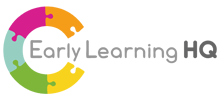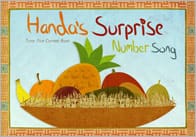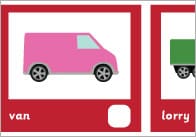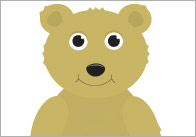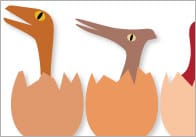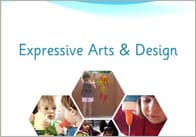All the Things You Wanted to Know About the Characteristics of Effective Learning (CoEL) – But Were Afraid to Ask!
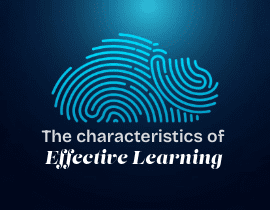
What exactly are the Characteristics of Effective Learning? Who discovered them and in what year?
There’s a lot to unpack in that question, let me take it step by step. The Characteristics of Effective Learning (or CoEL as all the cool kids say) are key principles from the Early Years Foundation Stage (or EYFS as the cool kids also say). They help early years professionals look at how children learn, rather than just what they learn. More specifically, they focus on how children interact with their environment, how they remain motivated, and how they develop their thinking skills.
As to the latter part of your question, they weren’t really discovered as such. I guess some clever boffins did a bit of research and worked out that children learn best when they are engaged, motivated and in an environment where they are encouraged to play, be curious and take risks.
So it has nothing to do with Roald Dahl-Amundsen, the lad who beat Scott to the South Pole?
I think what you’ve done there is mix up two people: Roald Amundsen the polar explorer and Roald Dahl the famous children’s book author (whose childhood home coincidentally is just down the road from where I live). Neither had anything to do with researching the characteristics of Effective Learning as far as I’m aware.
So you live in Cardiff then?
That’s very perceptive of you, I’m impressed. But it’s not really relevant to our discussion.
Siarad Cymraeg?
Ydw
Ok back to the topic. I think I understand what you’re saying but it’s a wee bit flouncy. Can you put it into some sort of bullet pointed list? I like lists. Better still can you explain it using an analogy to something that resonates with me, like 90s footballers.
Ok, I’ll give it a go. So there are three main Characteristics of Effective Learning. Think of them in terms of that great mid 90s Italian centre back partnership of Baresi, Costacurta and Maldini. Actually, I don’t know where I’m going with this. I’m abandoning the analogy. I can do the list though. The 3 characteristics are:
1. Playing & exploring
This one reflects children’s innate curiosity and eagerness to explore / discover. Think of it in terms of:
- Investigating and exploring: Children use their senses to engage with their surroundings, keen to understand the world.
- Engaging in familiar play: Pretend play helps children make sense of experiences, often recreating real-life situations or experimenting with new ideas. My children are always experimenting with new ideas, unfortunately those ideas often involve trying to set new traps for me or new ways of springing out at me from unexpected places.
- Embracing new challenges: They are willing to ‘have a go’, try new things. make mistakes, and learn from them. This builds confidence and adaptability.
Dame Clare Tickell’s report, Early Years: Foundations for Life, Health and Learning, explains that a child’s development is shaped by their environment, relationships, and personal traits. She says that learning doesn’t follow a fixed sequence but happens through connections made during play and exploration.
2. Active learning
Motivation and persistence are important here. Key aspects of active learning include:
- Concentration and engagement: A child deeply involved in a task is developing focus and enjoying the process of learning.
- Perseverance: Working through challenges helps strengthen resilience and problem-solving skills.
- Celebrating achievements: Feeling proud of their efforts encourages children to set new goals.
The government’s Development Matters guidance stresses the importance of giving children time to explore and play freely. When children can make their own choices and discover things for themselves, they gain confidence and independence in their learning and are more engaged.
3. Creating & thinking critically
This characteristic is about developing original ideas and making sense of new information. It involves:
- Coming up with their own ideas: Encouraging creativity and independent thought helps children explore possibilities.
- Recognising patterns and making connections: Finding links between experiences and ideas strengthens thinking and problem-solving skills.
- Choosing their own approach: Deciding how to tackle a task allows children to explore different strategies.
I think Alistair Bryce-Clegg (early childhood education specialist / consultant) talks well on this subject. He emphasises the importance of creativity and problem-solving in a child’s development. He explained in a Youtube interview a few years back:
“when we think at Early Years about creative and critical thinking, which is one of the characteristics of effective teaching and learning, that idea—being a creative thinker—also links massively into science, technology, engineering, art, and mathematics, because it’s about how you train a brain…how you can grow a brain to think in particular ways.
So if you only ever present children with one outcome, their brain gets very used to the expectation of an outcome. So when you present children with various outcomes and then you scaffold possibilities under that, then their brains learn that there’s always more than one solution.”
This idea also ties in with the Birth to 5 Matters framework, which suggests that children learn best when their experiences feel meaningful and relevant to them.
So there we have it, those are the Characteristics of Effective Learning in a nutshell.
I can’t lie I’m disappointed that you didn’t persist with the footballer analogy. I think it had legs. Your list was ok but what I’d really like to know is how do you go about supporting these characteristics? What can I do as an individual?
Good question. Parents and early years professionals can play a big role in nurturing the traits. I know you like lists so here’s a list of some ways that you can encourage them:
- Provide open-ended materials. Give children resources they can use in different ways helps with creativity, problem-solving, and discovery.
- Encourage learning through play. Play is a child’s natural way of exploring the world, developing social skills, and making sense of new concepts. Give children time to follow their own particular interests in their play.
- Support safe risk-taking. Creating an environment where children feel comfortable trying new things, making mistakes, and learning from them builds confidence and resilience.
- Celebrate effort and perseverance. It can be easy to fall into the trap of focusing on outcomes and results but praising persistence is really important.
By supporting the CoEL you can help children develop essential skills. Things like independence, resilience, and problem-solving that will prepare them for lifelong learning.
Ok nice one, I’ll do that then. First I’m going to get see if I can find my USA 94 sticker book, your talk of Baresi, Costacurta and Maldini has got me feeling nostalgic.
Popular Teaching Resources
Stay Up To Date
Sign up for our newsletter and we’ll let you know when we create new early years resources.
